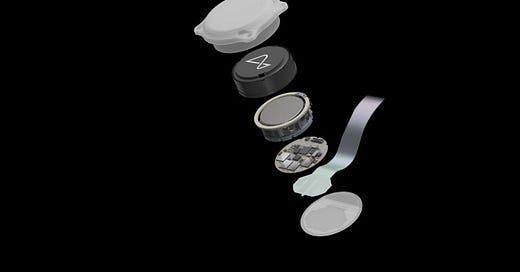Spatial computing is the future of technology. Think about it. The last step of immersion isn't the screen. Screens are an obstacle, they disconnect us from our surroundings and they don’t generate enough of a convincing alternative environment. We are, in the last moments of our screen age, living the infancy of a technological line of development.
The likes of Meta and Apple have finally caught up with the necessity of our era, and are developing technology for Mixed Reality. Believe it or not, phones have come fast and they will disappear even faster. Faster than the personal computer, as the Lindy effect dictates.
Imagine: over the next decade headset wearers walking around gesturing in the air, apps conveniently placed in the living room, widgets in the kitchen, etc. A true layer over the physical. But then of course, while this is perfect for consumption and the turning off of one's higher cognitive capacities, it will suck when it is time to do some serious learning or getting actual work done.
This is when people will start optimizing and coming up with spatial solutions to data management (data management is essentially what the computer is about).
The problem is, most of these solutions will be as bad and inflexible as today's note apps are. Except it will be twice as annoying because spatial computing is extremely personal. Imagine the amount of wasted effort, not getting the features you want or even just not being able to change the interface design of the thing you are obligated to look at everyday (I do already suffer from this when reading on the Books app).
At that point either you dumb down and bend to whatever the developers decide, or you have to develop your own apps. This is a problem.
So, to recapitulate and go really basic: computer technology is not about the internet, Instagram or whatever zombies do nowadays. Computers are data management machines. This data might, yes, be arranged in such a manner as to form a program to permit people to share their own photo data with each other (like Instagram). But this is only a shadow part of what data management is. You cannot, for example, share PDFs on instagram. You get the point.
Now, if internet applications do not fully comprehend what the computer is, current note applications do come pretty close.
Data management encompasses generation, organization, storage, and access to data.
You could think of a note app being turned into a file-sharing (again, data management) application over the internet, and it would be essentially the same as Instagram, except with more features. Think WhatsApp, Facebook, YouTube, and Instagram combined.
This still hasn't been done only because it is a very big project and we still don't have the computational power required to do it at such a comprehensive scale.
But it just might get done by Elon Musk. Indeed, if he is to truly create the standalone social media X is promised to become, the only way of doing so would be to swallow all the functionalities of other platforms into his platform. It just might really get done.
Let us return to the matter at hand.
When I say the computer I don't mean the personal computer which most boomers imagine as a slick thin laptop, but I am talking about computating power, be it in the form of the personal computer, the phone, or the headset.
The future of the computer is not the screen the phone, but the ultimate virtual integration, the magical merging with the the ethereal realm of virtual potentiality.
The first step away from the screen is commonly called Mixed Reality but can be better described as spatial computing. Essentially, its computing power is liberated from the rectangular corners of glass and fully integrated to physicality, and therefore the reverse: re-integration of the self in a virtually created space (complete immersion, Virtual Reality), essentially liberation from the physical world, transportation into the virtual. Symbolically this is also the destruction of space, and turning everything into time.
Can be understood as both the magico-virtual world seeping into the real, or the subject being taken away to the magico-virtual space.
This is the future of computing technology, no matter what you think of it. Just like buttons were eventually digitalized into screens, screens will be broken into three-dimensionality and released into the environment. This is what is coming out with VIsion Pro. Except it doesn't end there.
The apex of spatial computing is not headsets, but brain implants.
The Primacy of Wetware dictates the brain is the last horizon when it comes to simulation.
It is only logical that the most capable graphic engine, memory storage facility, and data-processing power is contained in the Cosmo's most complex object: the human brain.
Therefore any technology that aims at reproducing elements of the human experience will ultimately utilise the brain itself as its hardware(or wetware as I came to call it).
Neuralink is indeed developing symbiotic technology to connect computational power directly to the brain, with no intercessors in between. Again, why use a screen, and then use your eyes to get visual data when you can bypass all the intermediaries and go straight from bits to the image-generation section of the brain?
This is a part of my exploration of the topic of technology, where it comes from, and where it is headed. To assess these technologies’ development forward into the future, we need to understand where they come from, and what are the fundamental rules that guide their transformations.





